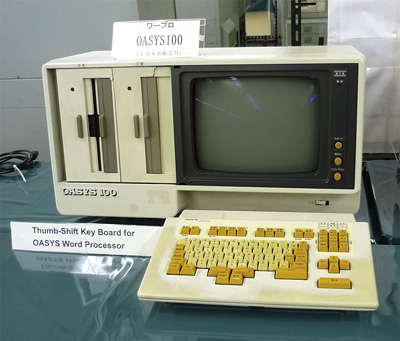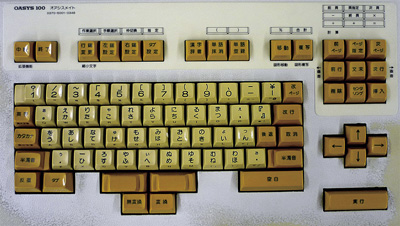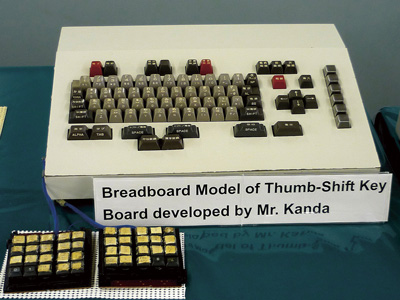

- Home >
- Artifacts of IP Heritage >
- 2009 >
- OASYS 100 and Breadboard Model of Thumb-Shift Keyboard
OASYS 100 and Breadboard Model of Thumb-Shift Keyboard



| Manufactured in | 1983 |
|---|---|
| Manufactured by | Fujitsu Limited |
| Owner | Fujitsu Limited |
| Location of historical materials | Fujitsu Numazu Complex 140 Miyamoto Numazu-shi, Shizuoka Japan 410-0396 |
| Visitor information | Not open to the public (Ask for a visit) |
| Contact | GENERAL AFFAIRS DEPT.
Email: fj-archives-history@dl.jp.fujitsu.com |
OASYS 100, announced in May 1980, is the Japanese language word processor that first incorporated the unique thumb-shift keyboard developed by Fujitsu. The breadboard model exhibited was used for researching and developing the thumb-shift keyboard.
OASYS 100 was developed as a Japanese language electronic typewriter on which any Japanese would input the Japanese language character “Kana” with a speedy and natural way of typing in order to never disturb a flow of thinking in Japanese. To realize the concept of OASYS 100 it was required that the Kana characters, which exceed sixty characters, were mapped on about thirty keys in three rows like an English- language typewriter having a touch typing capability. It was also required that any of the Kana characters was input by one stroke on the keyboard.
The breakthrough to realize the concept came with the idea of effective use of thumb that can simultaneously and easily press a key while some other finger presses another key. Based on this idea, the thumb-shift keyboard was invented. The keyboard had a pair of right and left thumb-shift key located on the center of the lower side of the board. The two thumb-shift keys had different roles for the shifting. Each of the character keys of the keyboard was assigned two or three Kana characters. It selectively shifted the characters to simultaneously press one of the thumb-shift keys, and thereby any Kana character was able to be input by one stroke on the thumb-shift keyboard. For easier use of the keyboard, the arrangement of the Kana characters was devised that aimed to more frequently use forefingers and to improve the possibility of alternate use of both hands.
The thumb-shift keyboard that was able to smoothly input the Kana characters played a major role during the period of diffusing the information processing in Japanese language. And its technology is valuable as a Japanese original one that aimed to widely use computers for Japanese.
